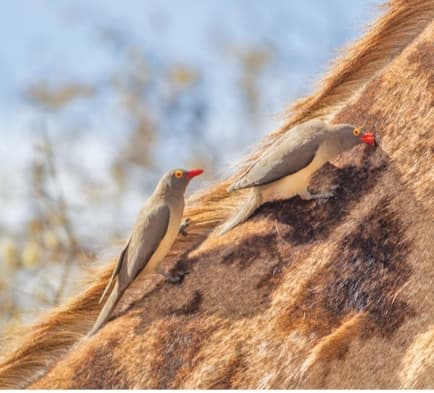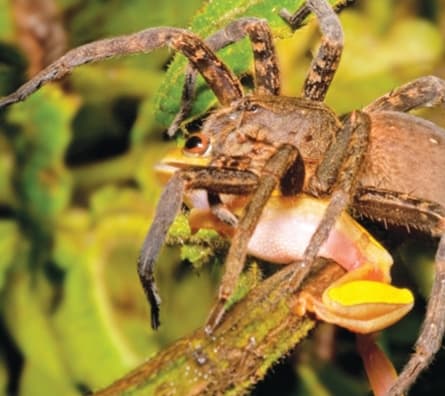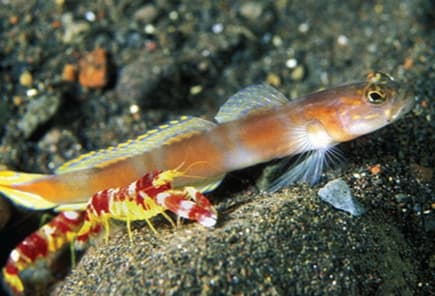Symbiosis – what a large word! But if you think about it, it’s for the big-hearted concept: how animal can work with each other to survive.
Did you ever have a roommate or sibling with whom you shared an apartment or condo with? Did the both of you come up with ways to share expenses and chores in such a way that both of you benefited from that relationship? If you have, then you have no idea of how some animals have what is called a symbiotic relationship.
Living together. Growing together
Symbiosis, strictly speaking, is any type of close interaction between two different animals that happens over a long time. In some cases, it can also be between the same species.
Symbiosis can come in many kinds; here are some of the ways that it can manifest in among living things, as enumerated by Arden Dore for Fact Monster.
Commensalism
In commensalism, one species has something to gain but the other one does not gain or lose anything.
One of the best examples of this are remoras, fish that have a physical adaptation to attach themselves to sharks and other larger aquatic animals. The remoras go wherever the larger animal goes and picks up food scraps when the larger animal feeds. The remoras gain a big advantage from the situation but the larger animal doesn’t.
Mutualism
This kind of symbiosis is the ultimate win-win as both parties have something to gain from the relationship. For example, birds and fish that clean larger animals of parasites and scraps stuck in between teeth have much to gain in terms of food, while the larger animal gets to be cleaned of leeches, ticks, and leftover food that can decay teeth and produce problems later on.
Parasitism
And then, you have parasites. This is the bad vibes of all symbiotic relationships, where one organism takes advantage of another – at the expense of the second organism’s well-being.
Mosquitoes, tape-worms, and ticks are just a few examples of parasitic animals that can and will cause sickness or even death in the organisms they prey on. For want of a better term, this type of symbiotic relationship is practically predatory in nature.
As you can see, there are many kinds of symbiosis in the animal kingdom; at the root of it is the idea that two different life forms can somehow have a relationship that benefits at least one of them to have a better chance at survival.
Unexpected partnerships
Some symbiotic relationships can get very weird, as the following can attest.
1.African Oxpeckers: Selfish cleaners

African oxpeckers spend most of the day on top of the larger animals of the savannah (hence their name), and their food source is ticks – lots of them. The animals they clean are usually pleased when they have parasites removed from their skin, making this look like a mutualistic symbiotic relationship, according to a 2018 article by Bryan Winter for Listverse. But don’t be fooled.
Oxpeckers have been known to suck blood from open wounds – after all, if you think about it, their main food source includes the blood of the larger animal. Also, they sometimes “cultivate” ticks on the skin of the larger animals. If the tick isn’t big enough or engorged with enough blood, they leave it alone until it’s “ripe for the picking.”
If anything, African Oxpeckers sound pretty… disturbing.
2. Hyenas: Dances with wolves?

Hyenas usually are loners when it comes to hunting but recently, scientists have observed hyenas hunting with wolfpacks in Southern Israel, according to a 2016 article by Ilana Strauss for From The Grapevine.
From how it looks, hyenas are taking advantage of the superior hunting skills that wolves possess. In return, the hyenas help wolves with their keen sense of smell, their ability to fragment larger bones, and their capability of ripping through garbage and cans when scavenging.
It’s a perfect marriage of the various strengths of the two species, and it shows a very flexible social aspect to symbiosis.
3. Badgers and coyotes: Danger from above and below

Coyotes and badgers are very unlikely symbiotic partners – unless it’s about hunting, reported Leigh Woods in a 2018 article for Youth Time. Coyotes usually hunt above ground, using their speed to pursue their soon-to-be dinner. Badgers, on the other hand, dig underground.
When it comes to hunting ground squirrels, the two animals have a natural strategy.
The coyote stands guard outside the burrow entrance while the badger hunts from below. It’s a 50-50 chance for the squirrel to become food: Either they are caught underground by the badger or the coyote snaps them up when they jump out of their holes.
The relationship is very unusual in that the relationship entails an average rate of success across many hunts.
4. Tarantulas and frogs: Eggs are the key

Giant tarantulas and small frogs are generally a bad idea when it comes to benefiting from each other – especially for the frog – but in some cases, it makes sense, as explained in a 2019 article in Unbelievable Facts. Some tarantulas and frogs have a symbiotic relationship revolving around the tarantula’s eggs. The frogs got protection from other predators, and they repay the tarantula by keeping the tarantula’s eggs clear of ants and any other animals that can feast on them.
The tarantulas identify capable frogs by “tasting” them for chemical cues, sometimes even picking them up to get a lick. It’s also important to note that some of these frogs have toxic chemicals on their skin, so eating them really isn’t that good an idea.
5. Hermit crabs and sea anemones: Travel buddies

Sea anemones have been known to hitchhike on top of hermit crabs. This affords them a measure of mobility and, since crabs can be messy eaters, they get to have new items on the menu from the scraps of the crab’s dinner, reported Kerensa McElroy for Cosmos Magazine.
Crabs are known for actively choosing sea anemones as travel buddies – they poke potential “backpackers” so they detach from whatever surface they’re on, and then transplant them to the back of their own shells. Anemones aren’t just passive travelers and camouflage for the crab; they can deter predators from making a meal out of the crab.
6. Shrimps and gobies: The odd couple

As if the world wasn’t with enough of a sense of humor, we have the working odd couple that is the goby fish and the snapping shrimp. It’s the shrimp who’s the hardworking one as the shrimp makes the burrows in the seabed, according to Winter’s article on Listverse. The fish’s job, of course, is to be the guard. Their pairing is so well developed that the shrimp will even extend its antennae to the goby fish, so that it can feel the fish’s warning signs.
In return, the fish can sleep in with the shrimp in the burrow, and use it as an escape plan when there’s danger.
As you can see, symbiosis, when done right, can benefit all parties involved. And even when it’s one sided or downright evilly parasitic, it is still a very interesting example of how evolution works not only for developing the body, but also the social and psychological relationships between animals.
The human connection
It should come as no surprise, but people also have their own symbiotic relationships as well.
Birds and the bees
A bird in Africa known as the greater honeyguide is known by the locals in Tanzania as the Hadza, according to Winter’s Listverse article. When a person does a distinct human call, the small bird is encouraged to lead him or her to honey. What the call is can be different depending on where you are: It can be a sound a person can make with their mouths, such as a whistle, or it can also be a spoken word.
Do take note that the honeyguides are not formally trained, and yet they still help people out. They win out, though, as the locals normally smoke out bees, so they can be more subdued while people are collecting honey. Smoked honeycomb pieces are usually left out for the honeyguides. It’s quite possible that the language used to “train” honeyguides can be as simple as remembering through their DNA (so to speak) that humans can and will help them as well.
Germs with benefits
It may be hard to believe for some people, but our bodies are actually gigantic germ carriers. Even if we keep on cleaning up, we rely on symbiotic microorganisms. For example, Lactobacillus bacteria are usually cultured for us to have better digestion, according to McElroy’s article for Cosmos Magazine. It’s not stretch of the imagination to say that without our many symbiotic relationships at the germ level… we may not even be alive at this point.
This appeared in Animal Scene magazine’s April 2020 issue.
You might want to read:
– To be or not to be: The question of gender in the Animal Kingdom
– Kuya Kim’s Animal Kingdom
– Woman starts fundraiser to build home for disabled animals this quarantine






